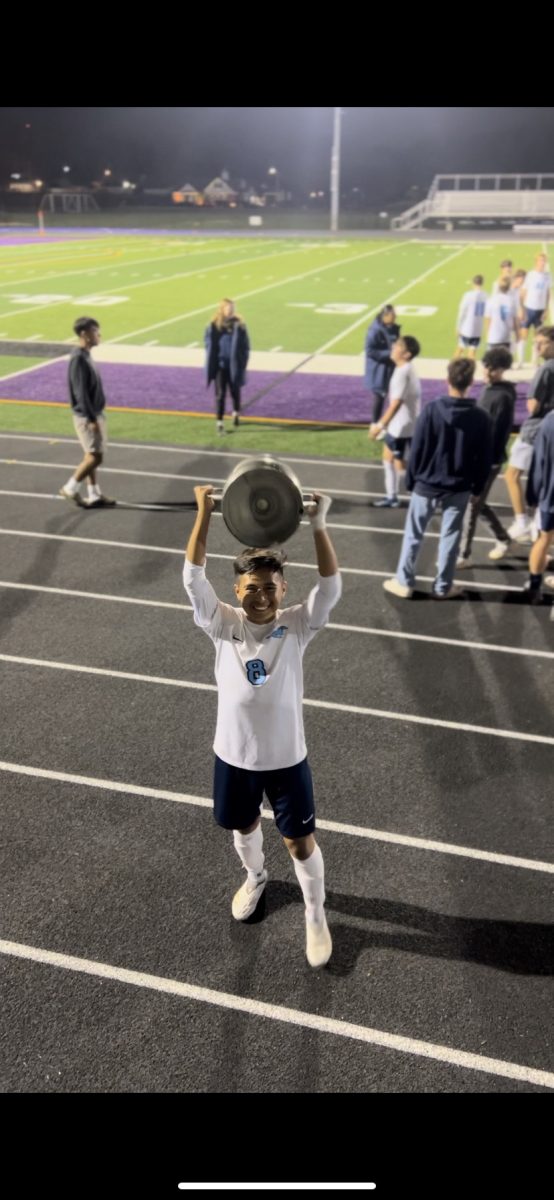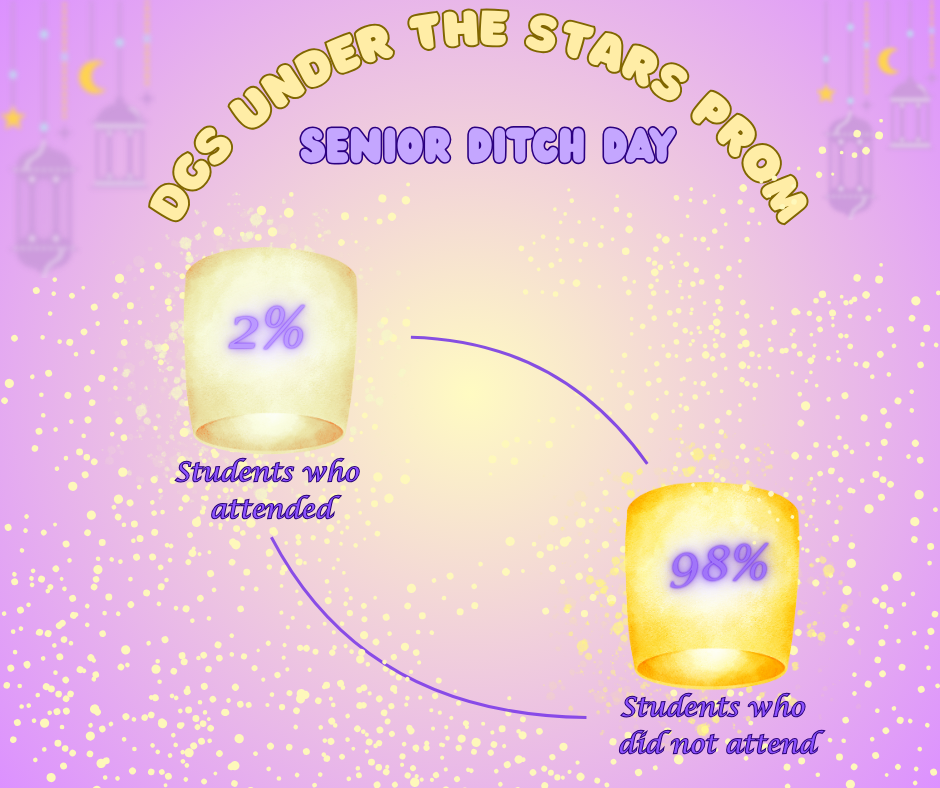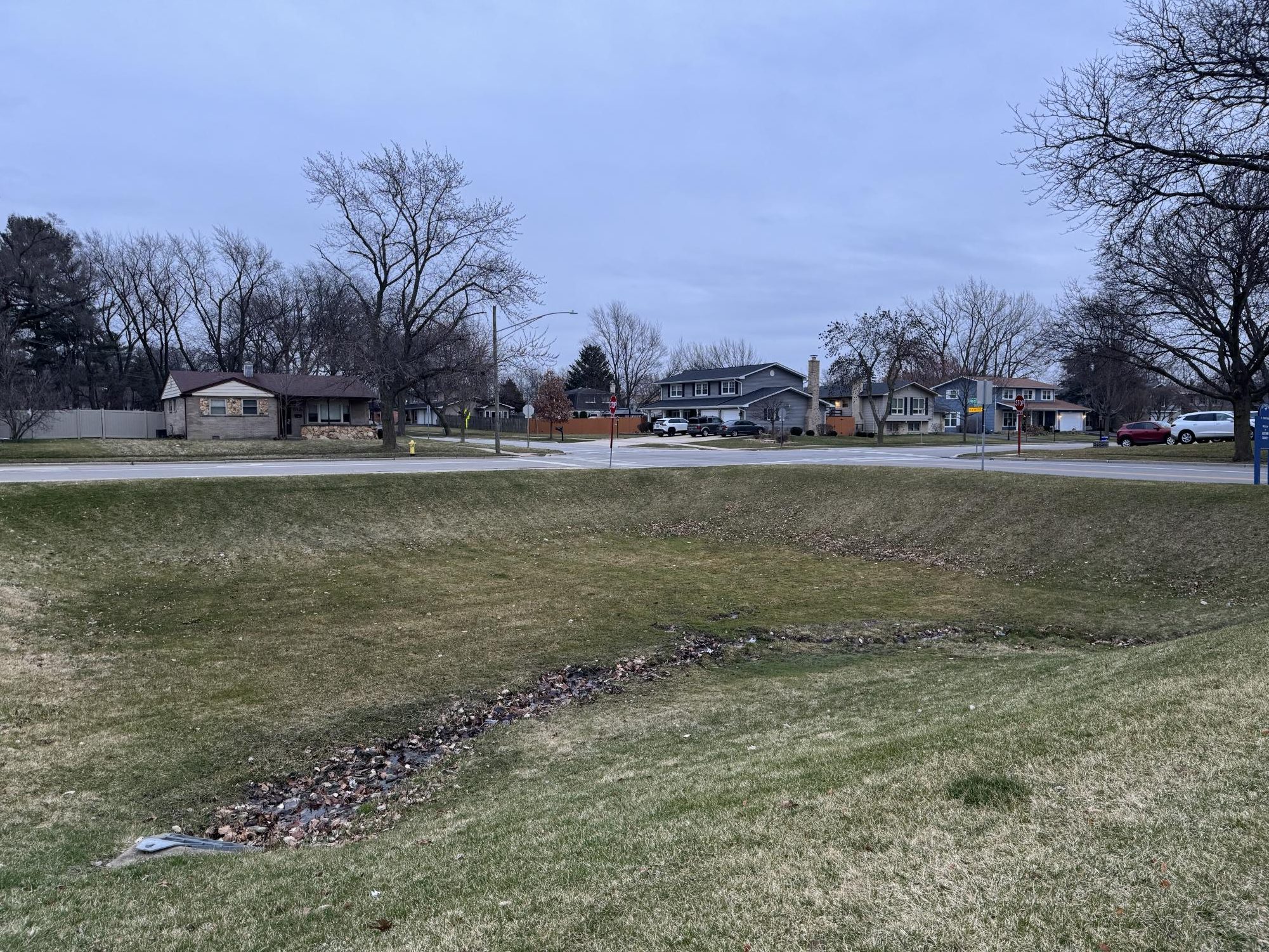
‘Prairie good:’ students leave their mark on DGS with a reconstructed grassland
At DGS, students are continuously encouraged to leave their mark and make a difference on their high school before graduating. While students show this in different ways, seniors Taylor Mitchell, Nahla Mokkath and Mara Haiduc are leaving a permanent, physical impact on DGS in the form of a natural prairie.
This prairie will be installed in the detention basin on the northwest corner of Norfolk St. and Dunham Rd. It will contain different types of grasses and wildflowers, including a shortgrass echinacea mix, a pollinator mix and a detention basin seed mix. The grasses will be short enough to allow for traffic visibility around the corner.
The project was started by Mitchell during her freshman year when she joined DGS’s research club. The school’s groundspeople came forward with a problem, and Mitchell came up with a solution.
“The inspiration for the project actually came from the grounds and maintenance people. That area was very troublesome to mow because the bottom is always kind of wet; it would leave mud prints, so they’ve always wanted to plant something … We thought that it was a good way to problem-solve and also make our campus prettier and provide learning for classes,” Mitchell said.
Mokkath and Haiduc joined research club during their sophomore year and wanted to take part in the prairie reconstruction because they saw the benefits it would bring. Not only will it provide a beautiful space at DGS, but the grasses and seeds were specifically chosen to attract wildlife, especially pollinators, and to increase biodiversity.
“I think that it’s just going to beautify our school and make it easier for the maintenance people. I just believe it’s a positive project. It’s also meant to be a pollinator garden and hopefully attract some wildlife,” Haiduc said.
On top of the wildlife benefits, the prairie will provide many different learning opportunities for students. Classes such as AP Environmental, AP Biology or even PE could use the prairie to teach about different plant and animal species or simply take a break outside.
Mitchell, Mokkath and Haiduc researched the mental health benefits that the prairie and pollinators will provide. Bees have been known to decrease mental health problems such as depression, anxiety and PTSD.
An article by Freedom Health Insurance says “They pollinate the plants in our gardens, parks and countryside. They are a symbol of nature and one of the reasons we can enjoy the natural green space and lots of activities like gardening, exercising or relaxing outdoors and being around animals. All these outdoor activities can improve our mood, reduce stress and boost confidence.”
This added benefit can be utilized by students who need a break from their classes. Rather than being inside all day, students can take a walk in the prairie when they need some fresh air.
In the three and a half years that the students have been working on the project, the trio has had to meet with many different groups of people to approve the prairie, including Principal Arwen Lyp, Supervisor of Buildings and Grounds Michael Reyes and Associate Principal Omar Davis. Student Activities Director Jennifer Martinez was originally introduced to the project during the girls’ sophomore year at a stem showcase.
“There’s just been a lot of meetings and things and presenting things to the board to make sure that they knew what we wanted to do and then also with the village to make sure that we could do these things. So I don’t know if I remember all the steps but there’s a lot of things; they had a plan and they worked with their science teacher. Then it’s about connecting pieces of our building and the greater community and making sure that we have all the things that they need for their plant on April 6,” Martinez said.
The prairie is fully approved and the seeds have arrived, so the plan is to till and plant on April 6. Mitchell, Mokkath, Haiduc, groundspeople and certain staff members hope to knock out the labor in one day and then have a “ribbon-cutting” ceremony on April 22 to recognize the girls’ hard work, showcase the prairie to the school and celebrate Earth Day.
The original proposed cost of the prairie was $1,900, including seed packages, erosion control matting, biodegradable stakes and a rented tiller. However, the school groundspeople at DGS have a tiller, so the actual amount spent fell around $1,600.
The planning, researching and financing of the prairie took three and a half years to complete, and the three students who did it all will have made a permanent impact on DGS.
“I’m just really proud of the students; I think it’s awesome because not everyone has an opportunity in their high school career to literally leave their mark on DGS … How cool is it that they are doing something that’s positively benefiting our environment or community? You know, it’s just really, really, really good, and so I’m excited to just see it happen, and excited for them because they worked really hard,” Martinez said.
The prairie will be a long-lasting and colorful addition to DGS’s campus. Research club provides many opportunities for students to do things like this that will benefit the school in the long run.
“Hopefully, this can inspire others and other freshmen to start something such as this so they can make an impact and leave their mark,” Mokkath said.
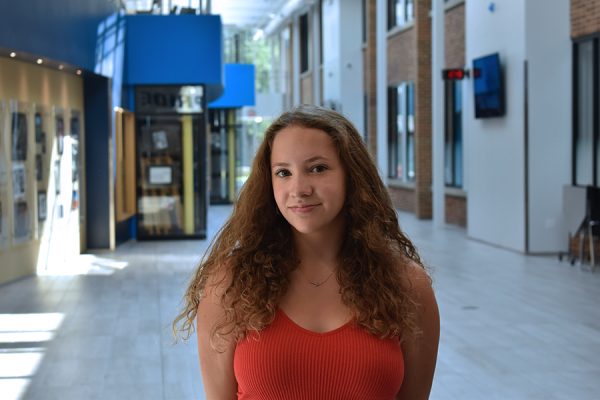




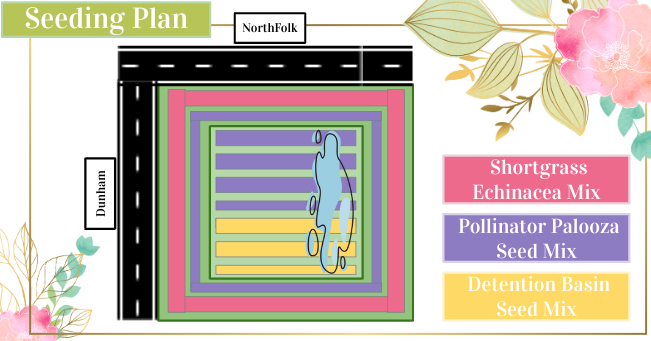
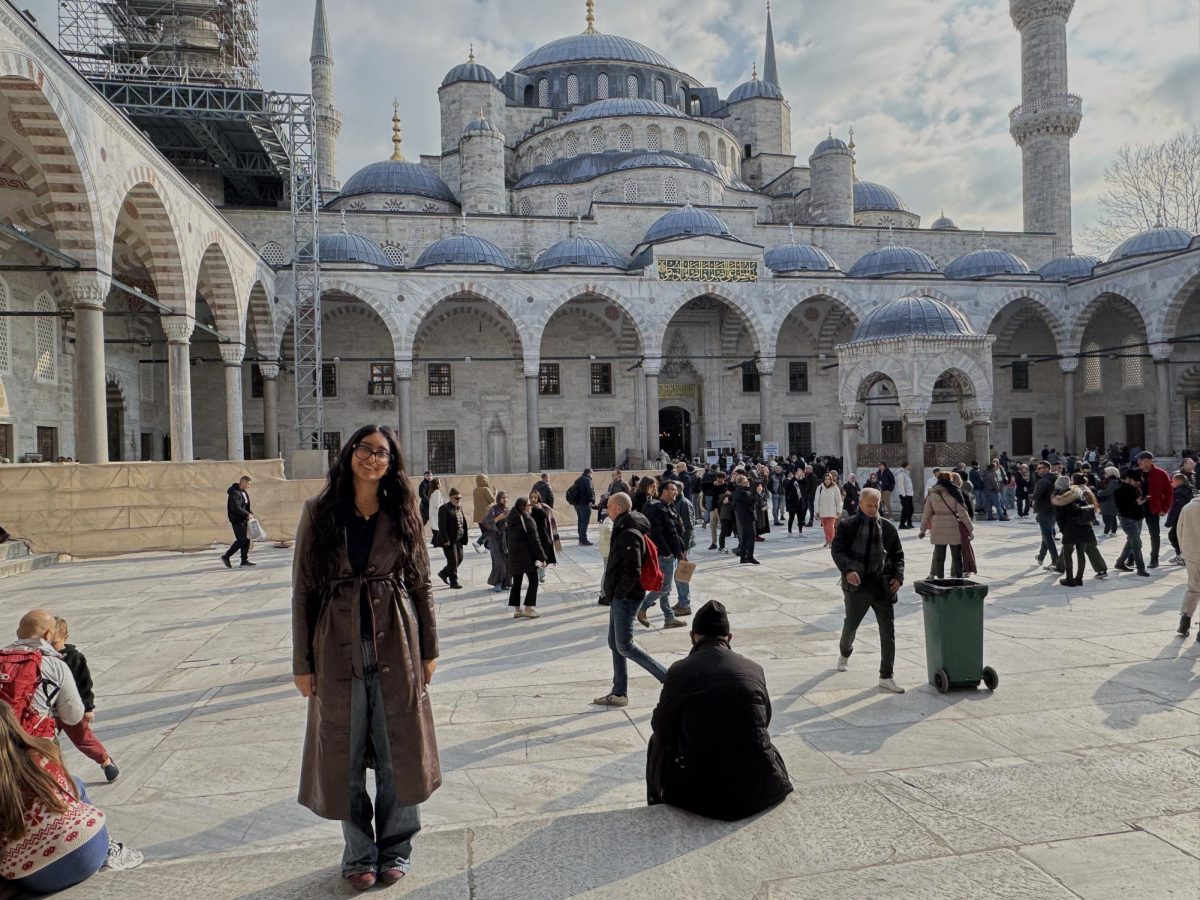

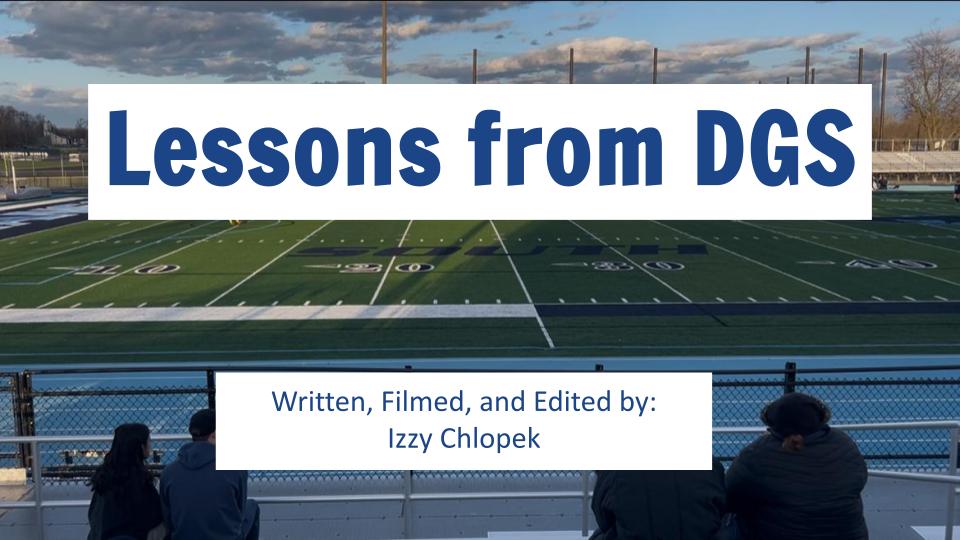

![In this documentary, you will learn how violins are made. All music is in the public domain:
Music Produced by Deutsche Grammophon, Medici TV, Heifetz Institute, and Queen Elisabeth competition
Paganini, Caprice No. 24 [Song recorded by Jasha Heifetz]. Heifetz Institute. (Original work published 1817)
Paganini, Caprice No. 24 [Song recorded by Jasha Heifetz]. Heifetz Institute. (Original work published 1817)
Bartok, Sonata No.1 for Solo Violin [Song recorded by Kevin Zhu]. Queen Elizabeth Competition. (Original work published 1944)
Paganini, Violin Concerto no. 1 [Song recorded by Philippe Hirshhorn]. Queen Elizabeth Competition. (Original work published 1819-1825)](https://southblueprint.com/wp-content/uploads/2025/05/Screenshot-2025-05-07-122429-1200x668.png)





